A simple program to transfer. How to share files over Wi-Fi. Setting up a home network between PCs, laptops, tablets and smartphones
Today we will talk about an important skill that every PC or laptop user needs to master. How often do you face the need to transfer a file (book, video, film) from one PC to another? You have a file that needs to be opened on another laptop. There is only WI-FI. All. No cords, no USB sticks. In our advanced world, when there are 2 or more computers in a house, it is very often necessary to connect devices into one network. Is it possible to connect two computers via WI-FI network? And how to do it simply, quickly and safely?
Every confident user will read you a whole lecture on the variety of file transfer options. Only that is not for this article. Let's take a quick look at what methods are available for an inexperienced user. How quickly, without bothering with advanced methods, having only the Internet and two laptops at your disposal, transfer any type and file format. And which one is simple and accessible to everyone. So, I will list the most famous methods:
- Home network of 2 or more computers. We will consider this method first of all and in more detail.
- Email.
- Torrent.
- Cloud storage.
Since we have an article on transferring files between computers via Wi-Fi, we will consider this method in detail and first of all.
Local network between two computers via Wi-Fi
On the topic of setting up a local network, I have already written two instructions:
A useful thing. Once configured, you will no longer bother in other ways. This will allow you to seamlessly transfer files from one computer to another.
If you have (according to the "cross" scheme, for connecting computers directly) or a router is installed in the room, then it's as easy as shelling pears to do this. It is enough that the computers are connected to one router. It doesn't matter if it's cable or Wi-Fi. Or stretch a cable from one computer to another. But if there is no way to do both, there is another solution. Create a wireless network between computers. It is called . A local area network is a very useful thing. Allows you to exchange files, play games.
Since I already wrote detailed instructions on the topic of setting up a local network (from the links above), then I see no reason to duplicate this information here. Go ahead and customize.
The most, perhaps, the oldest and still used by many method of transferring files. We all have email... Many have more than one. Go to your mail, click - write a letter, attach a file to a new letter, send it to a friend.

Or save it for yourself as a draft. You can open it on any device by simply going to your mail. One BUT. There are restrictions for attached files. You can send a few photos or an abstract. But video or large text formats are out of the question.
Torrent
Little used but very effective method for transferring bulky files (movies, for example). Many people use this program to download files from the Internet. But you can also upload your files from your computer. To do this, you need to have Torrent installed on both PC devices. Upload your file for distribution. Your friend is downloading.
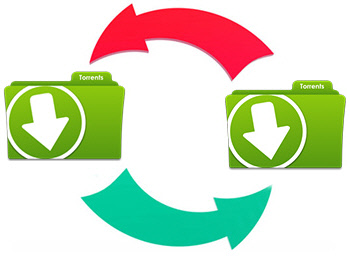
Among the advantages: no queues for downloads, high speed, the ability to stop downloading and then continue. Of the minuses: the program has access to all your programs, the download speed depends on the number of distributors. And not everyone wants to fool themselves, downloading a dubious program, and risking in passing to pick up all kinds of evil spirits like Amigo, mail.ru, classmates. So, the choice is yours.
Cloud storage
Perhaps the simplest and safest way to store information with the ability to access it from any device that has an Internet connection. Actually for this, these applications were created. So that we do not have to run from home to office and back with a flash drive for an advantage. In order to protect us from unexpected loss of stored information (due to a virus or a burned-out hard drive).
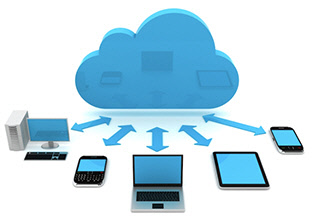
With the creation of these services, we now have the ability to store photos, documents and other files without cluttering our computer with megabytes. Have 24-hour access to them from any gadget. And transfer files to other web users. This is a convenient and optimal option because it provides reliable protection for your files.
The modern world cannot be imagined without electronics. Every day people use smartphones, tablets, laptops, computers and other digital equipment. Network technologies and the stable growth of the quality of the Internet connection increase the ease of interaction of gadgets with each other, but it is too early to talk about full integration. The easiest way in this regard is with desktop PCs. Equipped with full-fledged Ethernet adapters operating at speeds up to 1 Gb / s, they are easily combined into a common infrastructure via a local network. It is more difficult with portable technology: wired connection of a laptop with other devices requires a cable line and negates the advantage in the form of mobility. And tablets and smartphones are completely devoid of wired network interfaces: an RJ-45 connector, even theoretically in a case less than 1 cm thick, will not fit. The only option for a cable connection is the USB bus, the decoding of the name of which, although it contains the word "universal", is not quite so in practice.
The main task, which may require a high-speed connection of several gadgets, is the exchange of large files. The most common example of such a situation is the need to copy photos and videos from a smartphone to a PC, or the need to download a movie to the memory of a mobile device for viewing on the road. To solve this problem, as a rule, a USB cable or a card reader is used (if the smartphone or tablet is equipped with MicroSD).
A cable connection is not always convenient, especially if the PC is busy or there is no corresponding cord at hand. In addition, not all mobile devices support a flash drive connection. Some require a search, installation of drivers and auxiliary software for correct connection. To remove a microSD memory module from a smartphone, you often need to remove the cover and pull out the battery or look for a thin sharp object to remove the side tray. These actions are tiring and uncomfortable, even when the need for them is rare.
Few people know that you can exchange files between laptops, mobile devices and computers via Wi-Fi. The wireless interface frees you from worries in the form of finding a suitable cable and appropriate connectors, installing drivers. In addition, you do not need to release the second device to use it.
For example, if you urgently need to upload photos from your smartphone to your home PC or laptop, which is occupied by another family member, you do not need to ask him to release the car. It is enough to install Wi-Fi connection with a home network.
How to share files over Wi-Fi
There are several ways how to share files via wifi between laptops, desktops, smartphones and tablets. Some are universal, others are feasible only under certain conditions. The most convenient of them will be discussed below.
The local network
Using a local area network is a universal way to exchange files between a wide variety of electronics. Computers, laptops, tablets, smartphones on Windows and Android platforms can be combined into a single infrastructure. The only requirement is that the devices have wired or wireless interfaces (Ethernet or Wi-Fi).
Before you can exchange files over Wi-Fi from your phone to your computer (or between laptops), you need to ensure that they are connected to a common network. Usually there are no problems at home, difficulties sometimes take place in office networks.
In an average apartment, access to the network is organized by connecting to a dedicated line via cable or optical fiber. On the subscriber's side, a universal router is usually installed, equipped with wired (from 1 to 8) and wireless (for dozens of simultaneous connections) interfaces. When using the default settings of hardware and operating systems (or close to them), all devices connected to the router are physically on the same network.
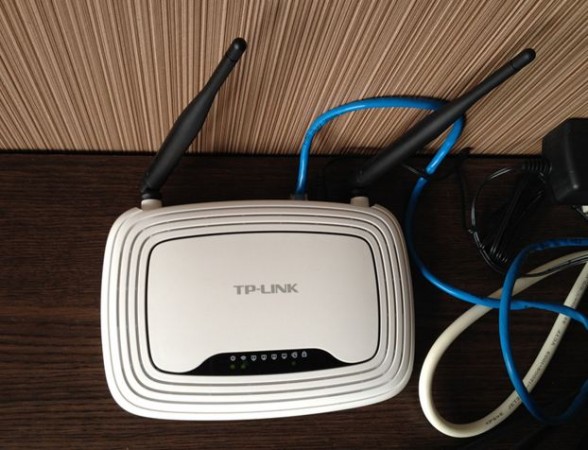
How to send files over Wi-Fi to a PC, laptop or Windows tablet from an Android device
Setting up on a computer
Before sharing files over Wi-Fi from your phone to your computer, you should make sure your smartphone is on the same network as your PC. If one router is installed in the house, connected to a PC via cable, and a smartphone is connected to it via Wi-Fi, the additional setting consists only in opening access to the computer from other devices. To do this, go to the "Control Panel", and select there the item "Network and Sharing Management". In the menu that opens, you need to go to the item "Change advanced sharing settings" and check the boxes "Enable network discovery", "Enable file and printer sharing." 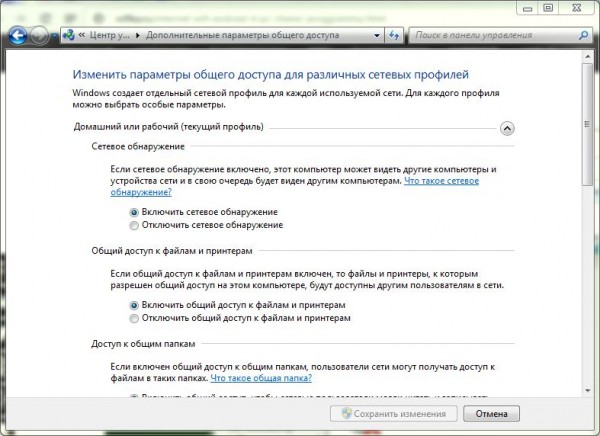
If only verified users are connected to the network, and the Wi-Fi connection is password protected, in the same menu you can select the checkbox "Disable password protected sharing". This eliminates the need to constantly enter your PC username and password when connecting. 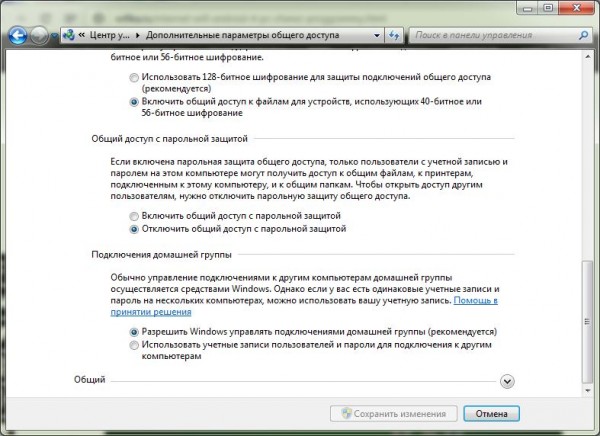
The next step is to open access to the computer disk. In Windows Explorer, right-click on the hard drive partition and select Properties. In the Access tab, click Advanced Setup, assign a name and set read and write permissions. After that, you can freely write files to the disc from your smartphone or another PC on the network. 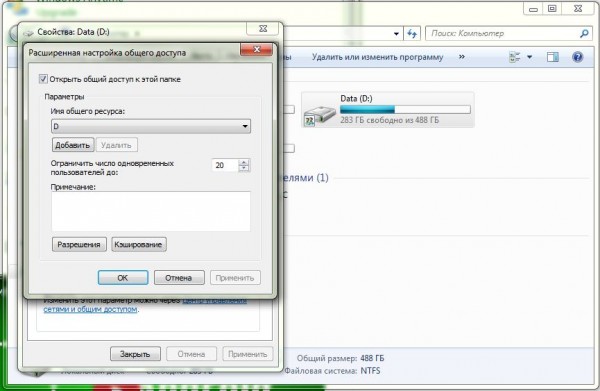
Setting up on a smartphone or tablet
Before you can transfer files over Wi-Fi from your phone to your computer, you also need to set up your smartphone. Built-in file managers usually do not have networking features, so third-party programs are needed. For this role, X-Plore (further illustrations are provided on his example) or ES Explorer will perfectly fit.
On the main screen of the program (where the list of drives is displayed), you need to click the settings icon and check the "Show local network" box. 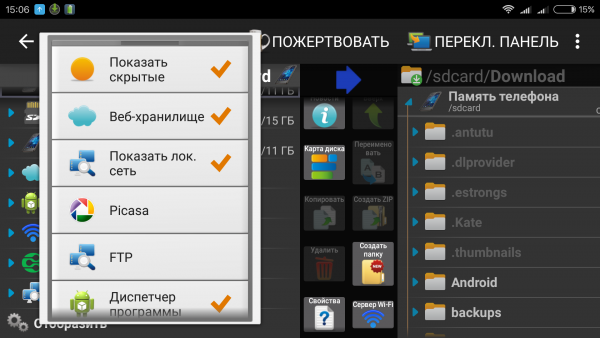 Next, open the LAN item and click the Add Server button, selecting the Search sub-item. The program will scan the network and display available computers.
Next, open the LAN item and click the Add Server button, selecting the Search sub-item. The program will scan the network and display available computers. 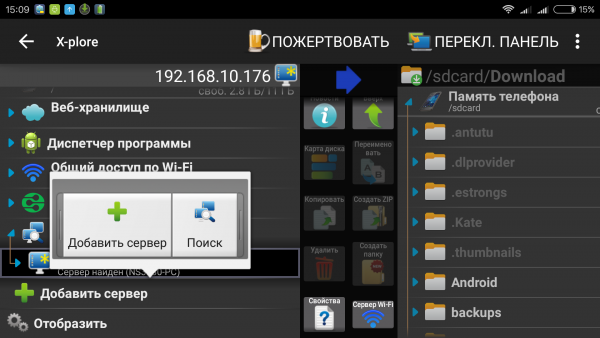 To connect to one of them, you should click on its name, and in the window that opens, enter the username (account on the PC) and password. The specified list will display a list of all locations (drives and folders) on the computer that are shared. You can work with them in the same way as with sections in the memory of a smartphone.
To connect to one of them, you should click on its name, and in the window that opens, enter the username (account on the PC) and password. The specified list will display a list of all locations (drives and folders) on the computer that are shared. You can work with them in the same way as with sections in the memory of a smartphone. 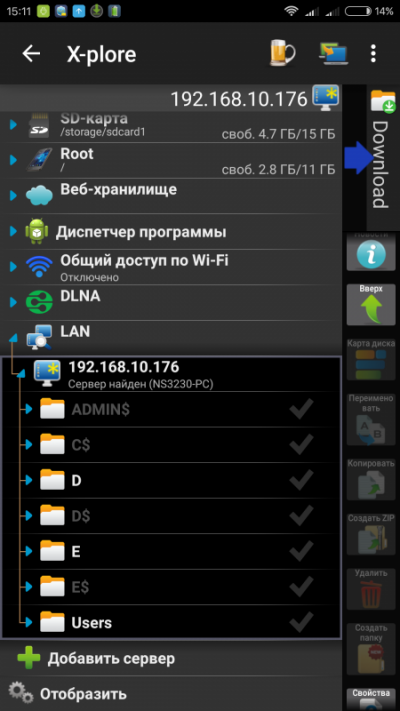
Now you can exchange files over Wi-Fi whenever the devices are on the same network. If password protection is disabled, you don't even need to enter a password to connect.
How to share files over Wi-Fi between laptops
In order to exchange via Wi-Fi between laptops, the built-in Windows functionality is sufficient. The whole procedure for setting up sharing does not differ from that when you enable the ability to access a PC from a smartphone. The only thing is, if they are not in a common home group, you need to create one. To do this, open the "Network and Sharing Management" item in the "Control Panel", select the submenu " Home group"And follow the OS recommendations. To connect a second computer, you need to select the same item on it, connect to the created group and enter the password that the first PC generated. 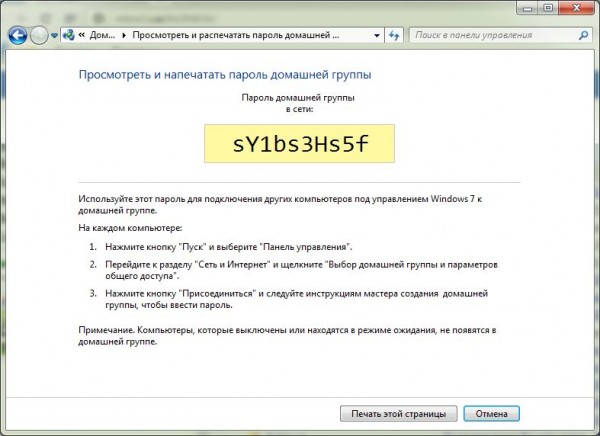
To work with files from a second computer, you need to right-click on the “Computer” icon (on the “Desktop” or in the “Start” menu) and open “Map network drive” in the pop-up context menu. Clicking the Browse button opens a list of available networks and computers connected to them. 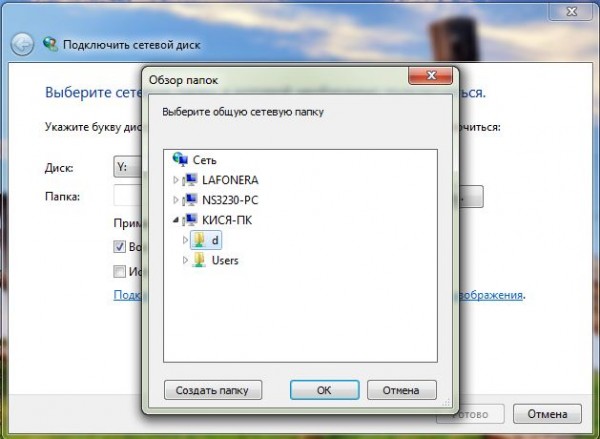 Having chosen the one you need, you should log into it with the password of his account to get into the list of available resources. After specifying the location, you should assign a letter to it. Now you can work with the disks of this PC in the same way as with the partitions of your computer.
Having chosen the one you need, you should log into it with the password of his account to get into the list of available resources. After specifying the location, you should assign a letter to it. Now you can work with the disks of this PC in the same way as with the partitions of your computer. 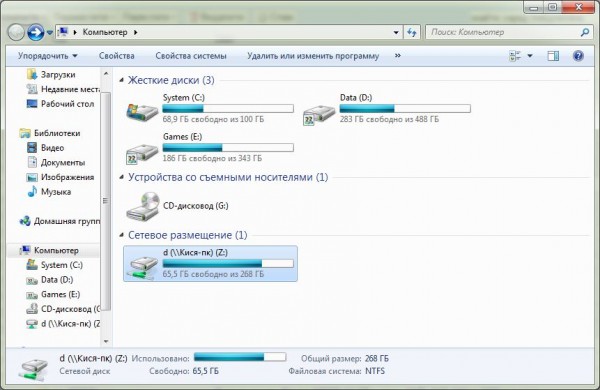
Wi-Fi Direct
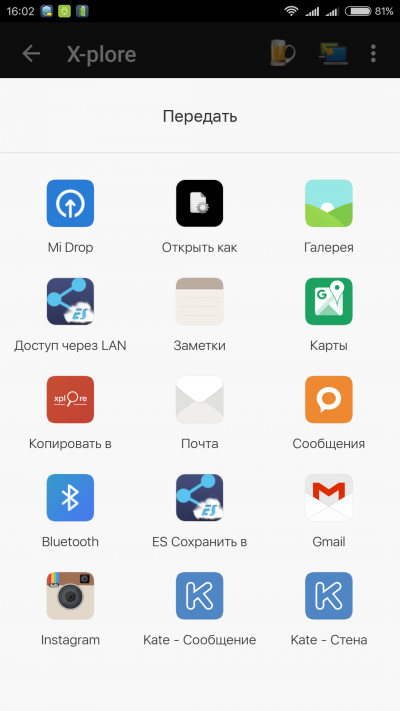
Wi-Fi Direct - a data transfer protocol designed for direct connection of two devices without using a router. In theory, it is supported by most modern Android smartphones. But in practice, certain difficulties arise. Many smartphone manufacturers do not include full support for this feature in their devices. The very possibility of enabling it in the settings is present. To do this, select the "Wi-Fi" item, go to " Additional settings"And select" Wi-Fi Direct "there. This must be done simultaneously on both devices. 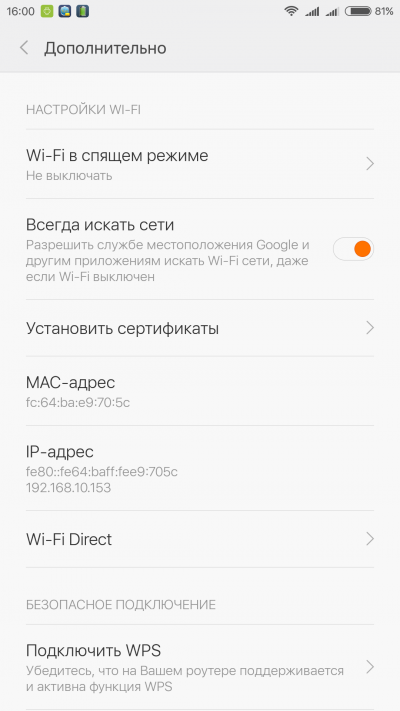 In practice, the function is fully present on some Samsung and possibly other brands of smartphones. When they turn on the "direct" in the "Transfer" context menu, which is called by holding a finger on the file icon in the file manager, the "Wi-Fi Direct" sub-item appears. Asus has changed it and renamed it to "Share Link", Xiaomi uses an analogue of Mi Drop. A similar situation is with the products of other companies.
In practice, the function is fully present on some Samsung and possibly other brands of smartphones. When they turn on the "direct" in the "Transfer" context menu, which is called by holding a finger on the file icon in the file manager, the "Wi-Fi Direct" sub-item appears. Asus has changed it and renamed it to "Share Link", Xiaomi uses an analogue of Mi Drop. A similar situation is with the products of other companies.
How to share files via Wi-Fi Direct
Before sharing files via Wi-Fi Direct between smartphones of different brands, you need to make sure that the function is fully supported. If so, after establishing a connection in any file manager, you need to open the context menu of the file that you want to transfer, select an item like “Transfer” and find Wi-Fi Direct in the list of options. 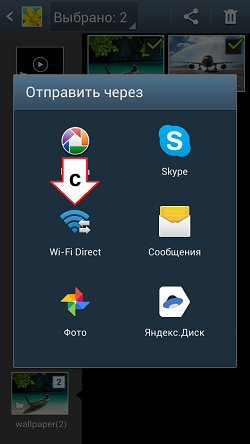
If this is not possible, third-party software comes to the rescue. There are SuperBeam, WiFi ShooT and others with transmission capabilities. But not everyone will like this method: keeping an application that performs one function is not always convenient. The already mentioned X-Plore is a more universal solution with richest options, so the choice fell on it. The program has an item "Shared Wi-Fi", which works according to a similar protocol. It allows two smartphones to be connected to a network for file sharing via Wi-Fi Direct.
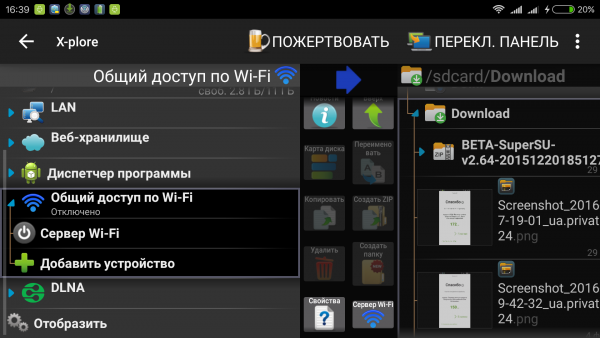
On the first smartphone, you need to open this option, press the "Wi-Fi Server" button and turn it on. On another device, you need to launch X-Plore, select "Search" in the same item and go to the list of disk resources of the found smartphone. You can work with them in the same way as with the built-in memory of a gadget or a MicroSD card. 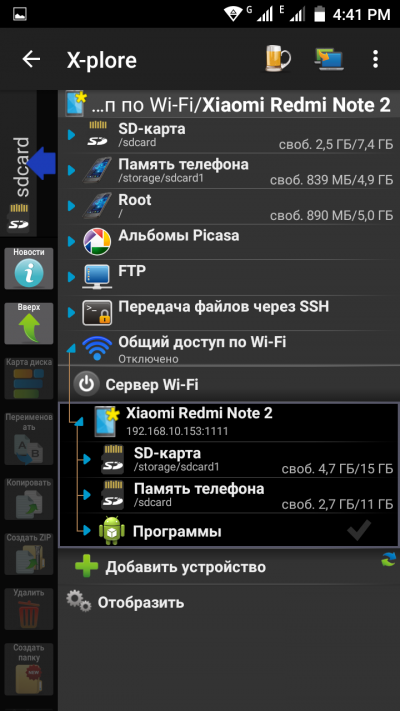
Conclusion
Wireless file sharing is convenient, and a home local network is a universal means of connecting all computers and mobile devices in the house into a single infrastructure. Wi-Fi speeds in theory reach 300 or 150 Mbit / s (there are more, but they are not supported by portable electronics), they are enough for transferring documents. But in practice, it all depends on the load of the air, the power of the wireless transmitter in a smartphone or tablet, and other conditions. Often the real speed is noticeably inferior to the cable connection, and it is better to use USB for transferring large files.
Also, before sharing files via Wi-Fi Direct, you need to make sure there is sufficient battery power. An active network module very quickly depletes battery capacity, and when transferring large amounts of data, you can suddenly get a turned off smartphone.
Don't forget about safety. If password protection was turned off before sending files over Wi-Fi from your phone to a computer or exchanging them between laptops, it is better to return it so that unauthorized persons cannot delete or change personal data on the disk.
How do I transfer files from computer to computer? The method that will be used for this purpose depends on the number of files being transferred. All methods will be discussed in detail below.
Transferring data using a removable disk
How to transfer files from computer to computer in an easy way? To do this, you need to buy or find one that is compatible with your computer.
If you are using a cloud service, you need to make sure you have permission to download files from another computer. There are services that do not provide such privileges.
Using a flash card
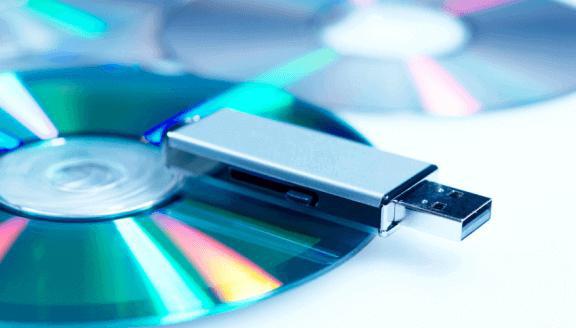
How do I transfer files from computer to computer if their total size is too small to use the hard drive? You can use a small flash drive, which will be ideal if the computers are far from each other, and the data is up to 64 gigabytes. The media can be purchased inexpensively both in computer stores and in office supplies.
Instead of a flash card, it is possible to use a laser disc, but for multiple recordings it is worth buying a disc at a higher price. Cheap ones are used only once. That is why a USB stick is much more convenient, as it saves money and the number of records is very large.
Transfer process
If you have decided on the equipment, then now you need to open the directory with the files. If they are mixed, then you need to sort them into folders according to some principle. Otherwise, how to transfer files from computer to computer if they are all mixed up?
Now it will be convenient to place the folder windows and the removable disk next to each other. Then you can click on the folder you want to transfer and drag it from one window to another. At the end, a window may appear that notifies about the success of the transfer. If the data takes up a lot of space, then the time taken for the transfer will also be indicated. Thus, the procedure is repeated until all necessary files and folders have been moved.
Now you need to properly remove the removable drive. Otherwise, information loss is possible. To do this, right-click on it and select the "Extract" item from the menu.
The removable disk is now inserted into another computer using a cable or directly. When the computer finds it, you can double-click to open it. Now you can transfer a file or folder from the media to the new computer using the same drag and drop.
Moving data across the network

To use this method, you first need to confirm that both computers are on the same server. When wireless network the speed must be very high.
This option is most suitable when the transmission is carried out regularly.
A shared password-protected network is created on both computers. Need to click on hDD and select its properties. Next, the "Shared" tab opens, the "Advanced Transfer" button is pressed. It remains to choose the access function, which, depending on the OS version, may be called differently.
On another computer, you must enter your username and password, go to the "Start" menu and select "Network". The list of connected computers must contain a second computer. When you select it, a password is entered to gain access.
The final stage of transfer is as follows: files marked for transfer are found and dragged.
Transfer using Windows Easy Share
You will need a USB cable to transfer files between computers.
This method is most suitable for users who have bought a new computer and want to drag and drop everything they need onto it from the old one.
The transfer application is downloaded through the Download Center on the official website of the company.
After installing the program, you need to register as an administrator to be able to gain access from both computers. A single account must be created for them. Now you can open the application, enter the password or transfer key, select the method to be used. It can be a network or a cable. Next, it is indicated that this is a new computer and is selected operating systemwhich is installed on the old one. The application is also launched on the second PC and the transfer process begins. If you wish, you can click on "Settings" and remove those elements that you do not need to transfer.
Upon completion of the process, all data will be available on the new computer.
Transfer using cloud storage
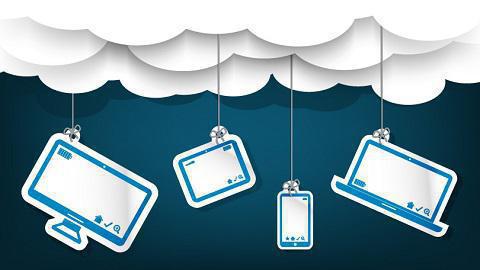
How to transfer files from computer to ipad or other computer without using hardware? Cloud services will be needed. They are convenient for moving files up to two gigabytes in size. You will need to register with them and get your own memory to use. Now you can log into your account on one device, transfer files to the cloud, and then access from another device and simply download them.